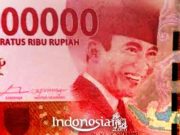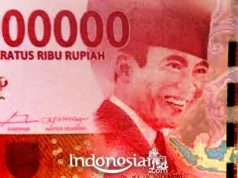Ugamo Malim is the belief and belief in the Creator of the universe God Almighty, Mulajadi Nabolon, which is a continuation of the simultaneous development of the religious system of Godhead that the Batak tribe has adhered to since ancient times. Batak people understand and interpret religiosity by treating nature as the foundation of life and a gift from Mulajadi Nabolon that must be guarded, both as a source of life (his existence) and as a source of livelihood (survival and ownership of his life). Spirituality maintains Mulajadi Nabolon’s nature of creation, combined with gratitude and surrender to the power of the Creator is maintained by rituals that are aligned with the chronology of LIFE and LIFE. Some of these rituals are carried out in the form of an offering ceremony to the Creator. The activity of preparing ceremonial equipment and “Pelean” (offerings) equipment is carried out very carefully according to the rules and regulations that have become “Patik” in the related ceremony. The activity of organizing the preparation for the ceremony and especially arranging the “Pelean” offerings is called “mang-UGAMO-hon”. Accordingly, people who always carry out ritual offerings get the nickname “par-UGAMO” or “parugama” in the old Batak language. The term “parugamo” was once again popular in Toba, when the influence of “religiosity – foreigners” was already prevalent in the Batak land, becoming an entity and identity of people that existed with the original Batak religious religiosity system. Ugamo means order, structuring properly. People often also call or write Malim Religion.
In the Batak language, people who adhere to and follow and live the teachings of Ugamo Malim are called par-Ugamo Malim, and are shortened to Parmalim. However, in today’s popular designation, the word Parmalim is often used (external party) as well as for the UGAMO MALIM trust institution itself. A group of people in carrying out one activity and one goal in the Batak language is called Punguan. Punguan Parmalim can be defined as the association of Ugamo Malim adherents and the container or facility where the Parmalim association performs its religious rituals. Punguan Parmalim (desire parpunguan) as the identity of places of worship and Parmalim associations. it was commonly used since the inception of Bale Pasogit Partonggoan in Hutatinggi Laguboti, which was mandated by Raja Sisingamangaraja – Raja Nasiakbagi – Patuan Raja Malim to his student Raja Mulia Naipospos.
In summary, it can be explained: Ugamo Malim is a teaching of faith, Parmalim is the people who live in it, Bale Pasogit Parmalim is Ugamo Malim’s center of worship. Meanwhile, Punguan Parmalim has two very different purposes, namely; 1). The place for the association / association of worship, the unit of parmalim residents takes shelter in one place of worship / Bale Parsantian led by a Ulu Punguan. Ulu Punguan carries out the duties and functions delegated by Ihutan Parmalim from Bale Pasogit Parmalim. Ulu Punguan, representing Ihutan Parmalim, leads worship within the Punguan Parmalim environment he leads. And 2) Punguan Parmalim Organization as a place for the followers of Ugamo Malim (parmalim) for non-religiosity (internal) affairs, and in Ugamo Malim’s administrative relations with the government and society (external).
History of Parmalim Religion
During the existence of Dinasty Sisingamangaraja, Bale Pasogit Pamujian was in Bakkara, but during the war, when the “invaders” burned down Bakkara, including Bale Pasogit Sisingamngaraja, was also burned. When foreign influences hit the Batak lands, causing sporadic shocks to the social order of life as a result of Dutch colonialism and the activity of spreading Christianity, Raja Sisingamangaraja ordered his students to establish Bale Pasogit later, as a place for “Pamujian Nabolon” to gather loyal people. with confidence in Mulajadi Nabolon. (This mandate was reminded again after the events of June 17, 1907, by a figure who called himself Nasiakbagi while pointing at the place of “position” and the visual image of Bale Pasogit which would later be erected by Raja Mulia.)
Regarding the mandate of establishing Bale Pasogit, Raja Mulia reported and conveyed his intention to the Dutch government through the Demang Office in Balige around 1913. The Dutch government conducted an investigation into the dissemination of Ugamo Malim’s teachings for several years, then it was known that in 1921 the Dutch allowed Raja Mulia to establish Bale Pasogit in Hutatinggi Laguboti through the letter Contoleur van Toba Number 1494/13 dated June 25, 1921. Starting from here, Ugamo Malim openly carried out ritual ceremonies, developing teachings centrally in Hutatinggi under the leadership of Raja Mulia Naipospos.
Leadership (Pinis Eld)
Raja Si Singamangaraja as Malim and Imam for the Batak people, teaches and enforces the commandment of worshiping and worshiping the Creator, Lord Mulajadi Nabolon, in his teachings he named himself Raja Nasiakbagi-Patuan Raja Malim. This is in accordance with the bitterness of his life while upholding Ugamo Malim as God’s command. And so that later his followers would remember and emulate the sacrifice and suffering of carrying out Ugamo Malim. King Mulia Naipospos was one of his students.
Raja Mulia Naipospos
Raja Nasiakbagi appointed and entrusted his disciple Raja Mulia Naipospos to lead his followers and spread Ugamo Malim called Ihutan Bolon Par-Malim also called Induk bolon (Great Leader), after being appointed and placed by the malim Raja Nasiakbagi as the first generation leader of Parmalim.
King Said Naipospos
Then the only son of Raja Mulia Naipospos, who was named Raja Reveal Naipospos, continued his leadership in 1956 as the second generation Parmalim Ihutan. In the previous period, in 1939 he had established the Parmalim School at Bale Pasogit Parmalim and received full support from Raja Mulia. In this school, Parmalim children from all corners of the world can go to school, so they don’t miss the Christian zending school. After Indonesia’s independence in 1945, this school was closed because Parmalim’s children had been accepted at the government school in their respective homes. During his leadership, he made a breakthrough in the pattern of Parmalim teaching guidance.
He wrote teachings and passed them to all Parmalim. Also make neatly stored written teachings, which previously were only oral. Administratively organizing Parmalim began at this time, which he carried out himself. Towards the end of King Naipospos’s life, Ugamo Malim Hutatinggi-Laguboti was registered in the inventory of Believers in the Belief in God Almighty, which was carried out by the government (Depdikbud) in 1980, namely the Decree of the Indonesian Ministry of Education No. I.136 / F.3 / N.1.1 / 1980. King Unveiled died on Monday, February 16, 1981.
Raja Marnangkok Naipospos
After King Ungkap died, his eldest son King Marnangkok Naipospos continued his leadership as the third generation Ihutan Parmalim. King Marnangkok Naipospos who was born on July 18, 1939, continued the work of Ihutan Parmalim. Maintaining and renovating the physical building of Bale Pasogit and adding to its supporting buildings by involving the self-help of the Parmalim people, In an effort to improve the development of Parmalim, Raja Marnangkok collected and recorded written teachings and guidance that had been made by Raja Ungkap, then recorded and printed them to be disseminated among the number of parmalim. more and more.
Parmalim Religious Teachings
Ugamo Malim has the teachings of prostration and submission to God, Patik in the form of teachings about Commandments and Prohibitions according to God’s will, Poda Hamalimon as a role model for thinking of acting and behaving towards others and nature, and “Tona” as God’s mandate to be conveyed to humans.
Parmalim performs routine worship rituals every Saturday (Marari Saturday) as a form of gratitude, worship and honor Mulajadi Nabolon, the creator of heaven and earth. Apart from Maraisabtu, Parmalim also carries out various rules of worship for Ugamo Malim, including “Pameleon Bolon” as a ritual of thanksgiving for life which is held in the fifth month (sipaha five), the ritual of forgiveness of sins “Mangan Napaet” in the 12th month and is grateful to commemorate the birth of the utuan. God to humans who are celebrated on the second and third day of the first month “sipaha sada” according to the Batak calendar.
Number of Followers
There is no exact data that says how many followers of this Parmalim. But basically, almost all of the followers of this sect live in the province of North Sumatra. Based on the results of the 2010 Population Census, in addition to the 6 official religions recognized by the government of the Republic of Indonesia, belief is included in the Other column (Number of followers of religion), including Parmalim. When calculated from the results of the 2010 Census, the number of followers of this sect is around 5,000 (calculated from the number in North Sumatra) or around 0.04% of the 13 million population of North Sumatra (2010). However, according to provisional scientific estimates, they number 11,000.
The majority of Parmalim followers are in Toba Samosir Regency. Still from BPS North Sumatra data, the number of followers reached 1,816 people (1.04%) of the approximately 140,000 inhabitants of Toba Samosir in 2010.































